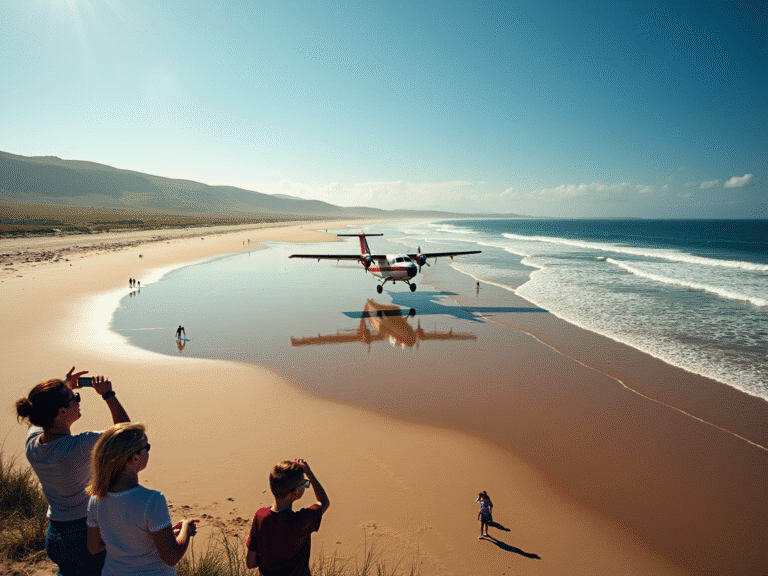Overview
This article dives into the thrilling world of air travel, focusing on the dangers associated with ten of the globe’s most perilous airports. It highlights the unique challenges these airports present to both pilots and travelers alike. You’ll discover specific incidents that illustrate the inherent risks tied to unpredictable weather, short runways, and unusual landing conditions. It’s a vivid reminder of the high stakes involved when flying to these intriguing destinations!
Key Highlights:
- The article discusses the world’s most dangerous airports, highlighting the risks associated with arrivals and departures.
- Nearly half of aviation crashes from 1983 to 2019 occurred during landing or takeoff, underscoring critical flight phase dangers.
- Notable incidents include Precision Air Flight 494’s crash in Tanzania and LATAM Perú Flight 2213’s collision with a fire engine, both illustrating safety challenges.
- Lukla Airport in Nepal is notorious for its short runway and unpredictable weather, crucial for trekkers heading to Everest despite high cancellation rates.
- Princess Juliana International Airport in Sint Maarten features landings above sunbathers at Maho Beach, posing unique challenges due to strong winds and a short runway.
- Tenzing-Hillary Airport (Lukla) requires specialized pilot training due to its high altitude and lack of radar, making it a dangerous airport with concerning accident rates.
- Barra Airport in Scotland uniquely lands on a beach, with pilots needing to time operations with tidal patterns, presenting a thrilling yet risky challenge.
- Courchevel Altiport in the French Alps has a steeply sloped runway, requiring pilots to have specialized training to navigate its complexities.
- McMurdo Station in Antarctica faces extreme weather and logistical challenges, with a low flight operation success rate during winter months.
- Kansai International Airport in Japan is built on a man-made island facing sinking issues, requiring constant monitoring and innovative engineering solutions.
- Gibraltar International Airport features a runway crossing a public road, with strong winds adding to the challenges faced by pilots.
- Saba Airport, known for having the shortest commercial runway in the world, demands exceptional precision from pilots due to its challenging topography.
Introduction
In the world of aviation, some airports are not just about where you’re going; they’re all about the thrill of navigating their unique challenges! Let’s dive into the globe’s most dangerous airports, where every landing and takeoff showcases both pilot skill and the inherent risks of flight. From the heart-pounding heights of Lukla Airport in Nepal to the breathtaking beach landings at Barra Airport in Scotland, these locations offer a blend of adventure and peril that’s sure to attract thrill-seekers and aviation enthusiasts alike.
As stories of near misses and daring flights unfold, the complexities of operating in these extreme environments reveal not just the statistics of safety but the real-life experiences of those brave enough to traverse them. Join me as we uncover the fascinating tales behind these airports, highlighting the relentless pursuit of safety amidst the exhilarating chaos of air travel. Are you ready for an adventure? Let’s explore together!
The Design Tourist: Exploring the World’s Most Dangerous Airports
Traveling can be such an exhilarating experience, right? But some terminals take that thrill to a whole new level! Let’s dive into the globe’s most dangerous airport—places where arrivals and departures aren’t for the faint-hearted. Each dangerous airport presents unique challenges, from severe weather conditions to tricky terrains, making them fascinating topics for adventurous travelers and flight enthusiasts like you!
Did you know that nearly half of all aviation crashes from 1983 to 2019 happened during landing or takeoff? That really highlights the risks involved in these critical flight phases. Take, for instance, the tragic crash of Precision Air Flight 494 into Lake Victoria while trying to land at Bukoba Airport in Tanzania. That incident resulted in 19 fatalities and brought attention to the importance of pilot training and the challenges posed by difficult landing environments. And then there was the crash of a Saurya Airlines Bombardier CRJ-200ER shortly after takeoff, which sadly claimed 18 lives, further illustrating the dangers linked to these treacherous spots.
Fast forward to 2025, and the flight industry is still grappling with safety issues at these locations. Just recently, I came across a report about LATAM Perú Flight 2213 colliding with a fire engine during takeoff—tragically, two firefighters lost their lives. Such incidents are stark reminders of the dangers lurking in these high-stakes environments, particularly at the dangerous airport.
Experts highlight the challenges pilots face at dangerous airports. The combination of unpredictable weather, challenging topography, and limited maneuvering space can make a dangerous airport turn routine flights into daunting tasks. As one aviation expert put it, “The exhilaration of flying is too keen, the pleasure too great, for it to be neglected as a sport.” This really captures the thrill and risks of flying, especially in these extreme settings.
As we explore the globe’s most perilous air travel hubs, particularly the dangerous airport destinations, we’ll uncover not just the statistics and case studies but also the firsthand experiences of travelers who have braved these locations. Every airport has a story of adventure, skill, and the relentless quest for safe travel amid formidable challenges. Plus, with continuous safety enhancements and programs in 2025, the aviation sector is committed to tackling these issues, offering a more balanced view of the current landscape. So, are you ready to discover these thrilling destinations?

Lukla Airport, Nepal: The Gateway to Everest’s Risks
Lukla, officially known as Tenzing-Hillary, sits at an impressive elevation of 9,383 feet in the Himalayas. The runway, measuring just 1,729 feet long and ending abruptly at a cliff, contributes to the reputation of this location as a dangerous airport, presenting a real challenge for landings and takeoffs. Pilots contend with unpredictable weather, including sudden fog and fierce winds, which can lead to a high rate of flight cancellations—often over 30% during the busy trekking seasons. Yet, despite these risks, Lukla remains the primary gateway for trekkers setting off on the iconic journey to Mount Everest, highlighting its vital role in adventure tourism. Typically, hiking around the Everest Base Camp takes about 11 to 15 days, making Lukla an essential starting point for this thrilling expedition.
Real-life experiences from trekkers reveal the location’s dual nature: it serves as a crucial logistical hub while also embodying the unpredictability of high-altitude travel. The air terminal’s importance goes beyond mere access; it plays a key role in rescue operations throughout the Everest region, emphasizing its significance in ensuring adventurers’ safety. As of 2025, flight safety evaluations continue to examine Lukla’s operational challenges, with experts noting that it is considered a dangerous airport due to its concerning accident rates. The Aviation Safety Network has documented incidents that highlight the inherent dangers of flying in and out of this dangerous airport located in a remote area. For instance, one incident involved an aircraft flying level for 14 seconds before a stall warning was triggered, underscoring the risks pilots encounter. As adventure tourism grows, the need for improved safety protocols and awareness among trekkers becomes increasingly important, making Lukla a central topic in discussions about safety in extreme environments.

Princess Juliana International Airport, Sint Maarten: Thrills and Hazards
Princess Juliana International Airport is quite the spectacle! Imagine aircraft soaring just feet above the sunbathers at Maho Beach—what an exhilarating experience for both beachgoers and aviation enthusiasts alike! However, this unique proximity does come with its challenges. The airfield faces strong crosswinds and a notably short runway, which means pilots need exceptional skill and precision during landings. As peak tourist seasons attract crowds eager to witness this thrilling sight, the stakes rise, requiring pilots to navigate these conditions with extra caution.
Did you know that the terminal boasts:
- five emigration booths
- twenty immigration booths
- thirteen boarding gates
- ten transfer desks
- forty-six check-in counters?
This highlights its role as a bustling hub! Yet, despite its allure, this dangerous airport has faced scrutiny regarding safety. Accident rates have sparked important discussions among flight specialists about the inherent dangers of this dangerous airport. As aviation expert Catherine Mukosa puts it, “The thrill of landing at Princess Juliana is matched by the need for meticulous planning and execution, making it a true test of a pilot’s capabilities.”
Real-world examples really illustrate the challenges pilots face, especially during busy periods when the beach is packed with onlookers. The airport’s role as a center for emergency and evacuation flights adds another layer of complexity. Pilots must balance the excitement of landing with the critical nature of their operations. As this air travel hub continues to serve as a vital point for these flights, its reputation as a dangerous airport remains firmly intact. Are you ready to explore this thrilling destination?
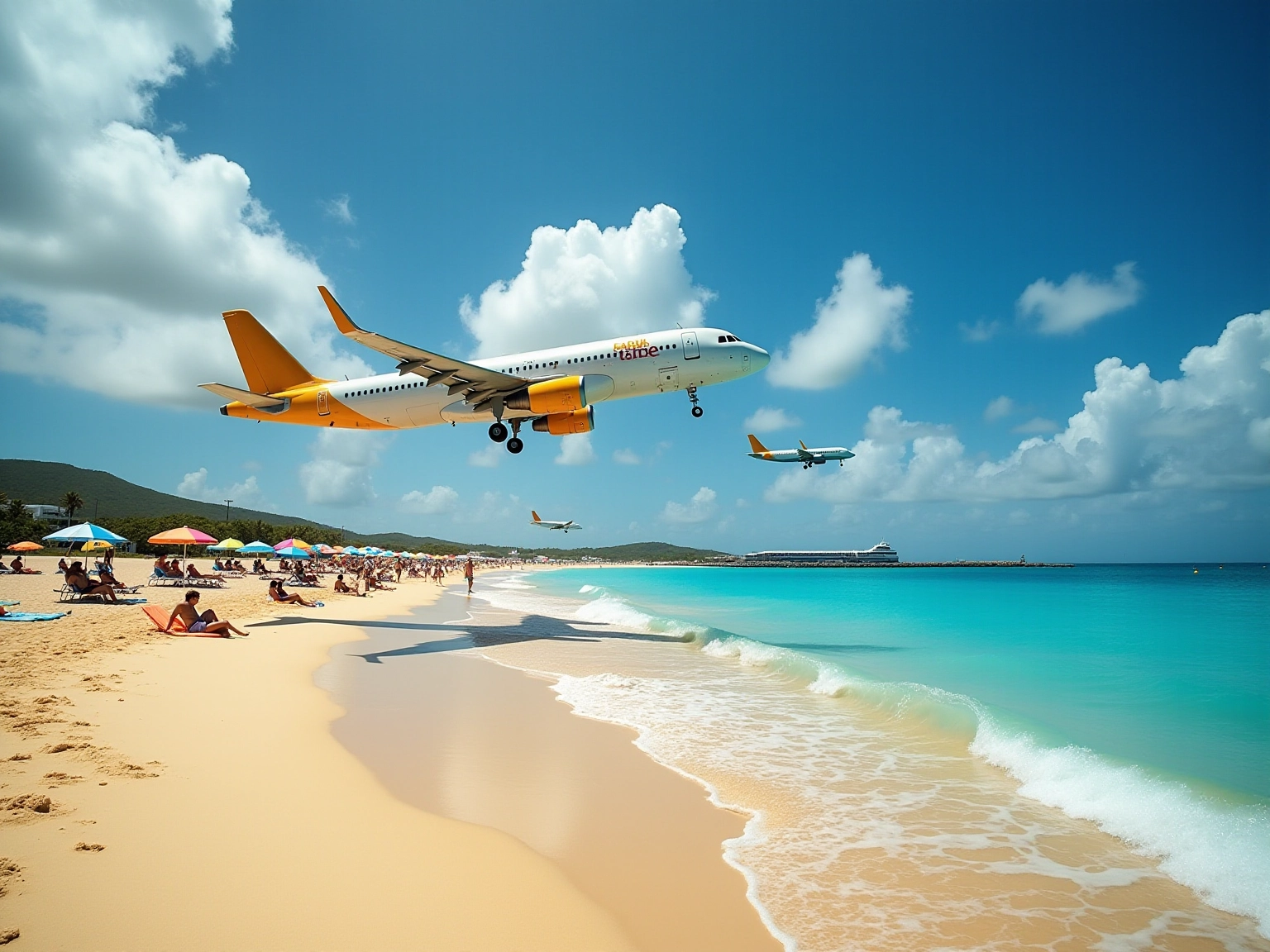
Tenzing-Hillary Airport, Nepal: A High-Stakes Landing
Tenzing-Hillary, often called Lukla, is your vital gateway to Everest, showcasing the bravery of pilots and the determination of travelers like you! Navigating this dangerous airport is no small feat, especially without radar or a control tower. Pilots rely on their keen visual cues and extensive training to tackle the tricky terrain. Nestled at a high elevation and surrounded by towering mountains, this airfield presents unique challenges that spark ongoing discussions about flight safety in extreme conditions.
What’s fascinating about the Tenzing-Hillary airstrip is the specialized training pilots undergo. They face sudden weather changes that can dramatically impact flights, making preparation essential. For instance, remember how flights at Tribhuvan International Airport (TIA) have been disrupted by bad weather? It’s a reminder of the hurdles pilots encounter at Lukla. These incidents really highlight the importance of safety protocols and the need for professionalism in the air travel industry, as tourism expert Raj Gyawali points out. Did you know that high-altitude airfields like Tenzing-Hillary are classified as dangerous airports because they carry significantly higher risks compared to those at lower altitudes? That’s why a strong focus on safety measures is crucial! The Civil Aviation Authority of Nepal (CAAN) emphasizes that they hold both the authority’s personnel and the airline company accountable for any safety failures, underlining the importance of responsibility in aviation.
As the aviation community works through these challenges, the experiences of pilots flying into Lukla stand as a testament to the resilience needed in such high-stakes environments. If you’re considering a flight to Lukla, it’s essential to stay updated on weather conditions and choose airlines known for their strong safety records. This way, you can ensure a safer journey and enjoy the breathtaking adventure that awaits!
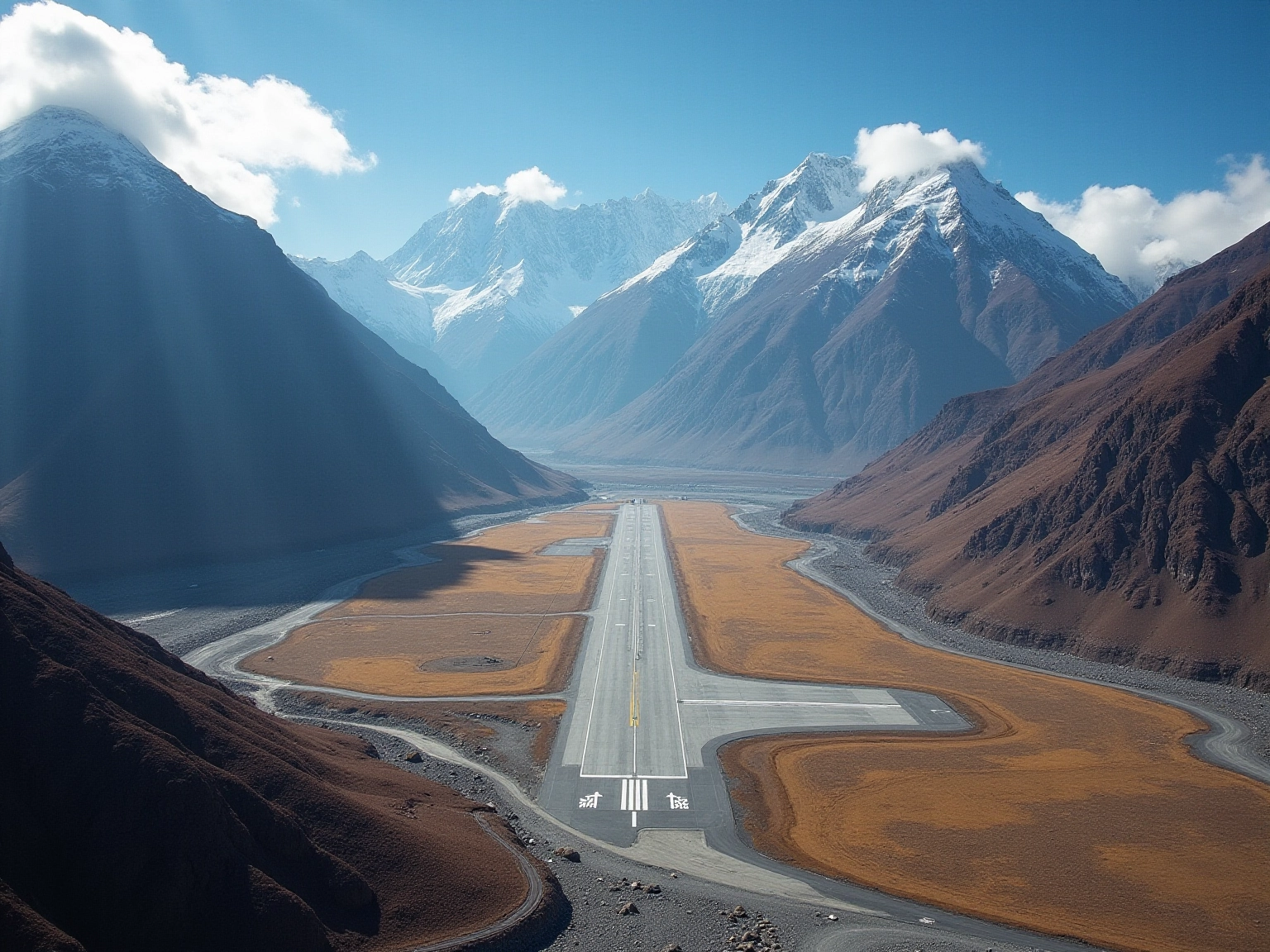
Barra Airport, Scotland: Landings on the Beach
Did you know that Barra’s airstrip is recognized as a dangerous airport, being the only place in the world where scheduled flights land right on a beach? Nestled on Traigh Mhor, this dangerous airport features a unique runway that actually gets submerged during high tide, which means that pilots need to time their landings and takeoffs with precision. It’s a thrilling challenge at a dangerous airport that transforms each flight into an incredible test of skill!
This fascinating landing condition at a dangerous airport not only puts aviators to the test but also draws travelers eager to soak in the stunning scenery of Scotland’s coastline. Barra airfield, often regarded as a dangerous airport, operates around 12 flights daily and boasts a safety record that highlights the expertise required for such beach landings.
The DHC-6 Twin Otter aircraft, which serves this route, holds just 19 passengers, creating an intimate flying experience that showcases the breathtaking highlands and the charm of small regional airlines, but it operates from a dangerous airport where aviation experts stress the importance of timing and precision for beach landings, pointing out that successful operations at Barra demand not just skill but also a solid understanding of local tidal patterns.
Pilots have shared their exhilarating experiences, describing the thrill of landing on a beach as both exciting and challenging, with each approach offering a new view of the picturesque landscape. With its stunning backdrop and the excitement of beach landings, Barra Airport is considered a dangerous airport and has become a must-visit spot for aviation enthusiasts and adventurous travelers alike.
And let me tell you, flying on the DHC-6 Twin Otter adds a distinctive touch to the whole experience!
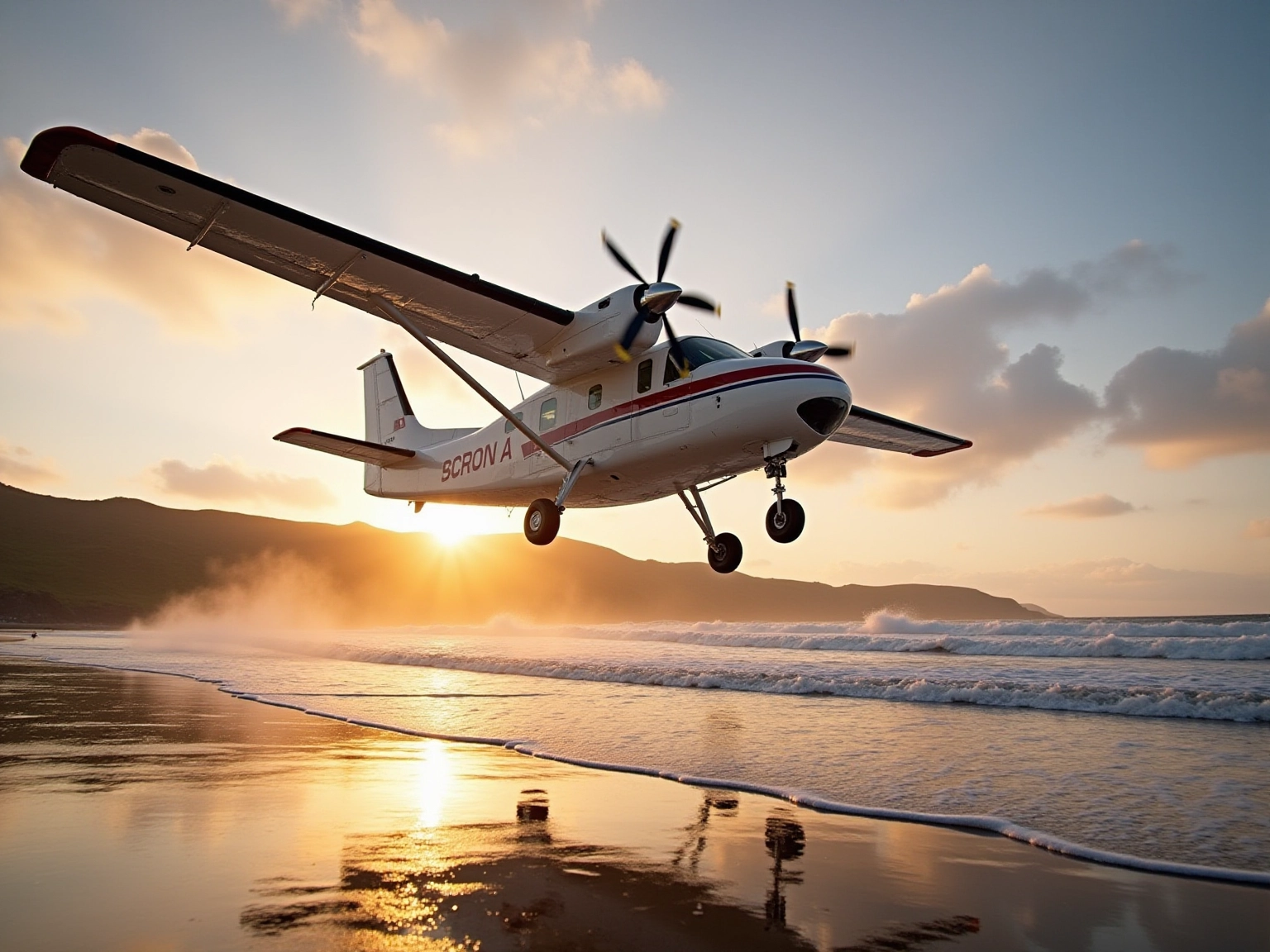
Courchevel Altiport, France: Ski Resort Risks
Courchevel Altiport, nestled in the stunning French Alps, is quite the adventure for pilots! With its steeply sloped runway, it presents some serious challenges. At an elevation of 6,588 feet, the altitude, combined with limited navigation aids, makes landings tricky, especially when the weather doesn’t cooperate. Pilots really need specialized training to handle these complexities safely.
This air travel hub, recognized as a dangerous airport, has had its fair share of documented incidents linked to its challenging approach, which highlights the inherent dangers involved. Since 2014, Alpine Airlines has been the only operator offering commercial flights to this unique destination, making it a significant spot in the ski resort landscape.
Safety is always a top priority in the airline sector. With rigorous training and advanced technology, they’re working hard to reduce risks associated with dangerous airports. Did you know that an airplane’s tires can be off the paved surface in less than 600 feet during takeoff? That’s just one example of the runway’s challenges!
Dave Hirschman, a seasoned aerospace writer, shares that despite his global travels, he’s never come across a facility quite like Courchevel Altiport. This uniqueness is further supported by the ongoing evolution of safety protocols in the aviation industry. A case study titled “Safety Measures in Aviation: Addressing Airport Risks” emphasizes how crucial training, technology, and stringent safety measures are in enhancing safety for both pilots and passengers. So, if you’re considering a trip, know that safety is at the forefront of this thrilling experience!

McMurdo Station, Antarctica: The World’s Most Isolated Airport
McMurdo Station is the largest research facility in Antarctica, and it features an airstrip that faces some of the most extreme weather on the planet! This dangerous airport, isolated and remote, deals with significant logistical challenges, including limited access to supplies and personnel. You’ll find that flights to and from McMurdo operate in a dangerous airport environment, heavily influenced by rapidly changing weather patterns, with cancellations often happening due to severe conditions. For example, during winter, temperatures can drop to a staggering 72 degrees below zero, making the airport a dangerous environment for pilots.
Captain Simmons, a seasoned pilot, shares his concerns about engine shutdowns during these frigid operations. He says, “Just because it is WinFly and so cold, you worry about shutting down the engines.” Despite these challenges, teams are always ready to adapt their plans based on the weather. Take the case study titled “Anticipated Deployment Before Thanksgiving,” where hopeful news about a potential deployment was met with the reality of ongoing weather issues.
Operational statistics reveal that McMurdo Station is classified as a dangerous airport, with a flight operation success rate of only 60% during the severe winter months. This really highlights the resilience needed for air travel under such extreme conditions. It makes McMurdo a fascinating example of the intersection between aviation and the harsh realities of Antarctica, doesn’t it?
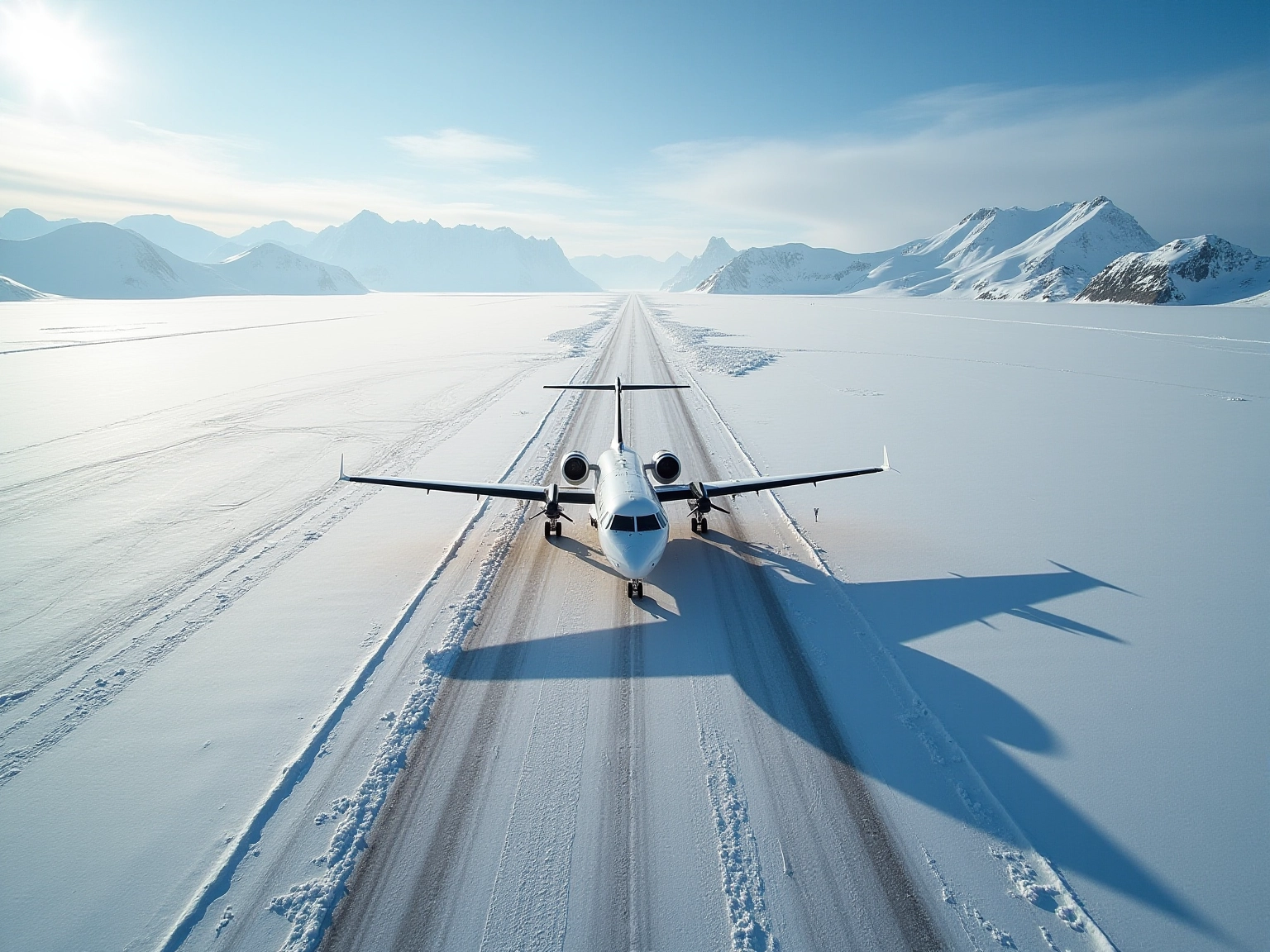
Kansai International Airport, Japan: Built on Water
Kansai International Airport is truly a remarkable feat of engineering, perched on a man-made island in Osaka Bay! Isn’t that fascinating? However, this innovative design does come with challenges similar to those faced at a dangerous airport. Due to the soft soil beneath it, the airport has become a dangerous airport, resulting in a constant need for monitoring and maintenance to ensure safety. Alarmingly, experts predict that if current trends continue, the facility could reach sea level by 2056! This raises some urgent discussions about how to address the long-term sinking issues of the dangerous airport.
The engineering behind Kansai International Airport is quite advanced, designed to manage these challenges effectively. Regular assessments of the land’s subsidence are part of the routine, which were initially estimated during construction based on soil reclamation needs. Yukako Handa, a representative of Kansai Airports, shared a key insight: “When the Kansai facility was constructed, the amount of soil to reclaim the land was determined based on necessary ground level and subsidence estimation over 50 years after the construction.” This foresight is crucial as the facility navigates the complexities of staying functional in a sinking environment.
You might find it interesting that real-world instances of airfield upkeep in similar situations, like the challenges faced by San Francisco International and Venice Marco Polo, highlight the importance of creative engineering solutions. Kansai International serves as an intriguing case study, showing how modern aviation infrastructure can adapt to and mitigate the risks associated with being a dangerous airport due to its unique geographical challenges. So, if you’re ever in the area, you’ll not only witness an engineering marvel but also a story of resilience and innovation!
Gibraltar International Airport: A Unique Intersection of Land and Air
Gibraltar International Airport is truly a gem, featuring a unique runway that crosses a public road! This means that traffic has to pause during takeoffs and landings, which can be quite the spectacle for travelers. It’s not just a quirky detail; this setup at a dangerous airport presents challenges for pilots and adds a thrilling twist to your travel experience. Plus, the airport is considered a dangerous airport due to often facing strong winds, which makes landings a bit more complex and requires some skilled navigation.
Despite these hurdles, Gibraltar Airport is vital for connecting you to various destinations, showcasing its importance in regional travel. In 2023, the airport saw a fantastic surge in passenger traffic, with July welcoming 52,409 travelers—a 9.1% increase from the previous year! This growth really highlights the airport’s capabilities and the confidence that airlines and passengers have in its operations.
Looking back, over 500,000 passengers passed through in 2016, marking a significant milestone in its history. Terence Lopez, the Air Terminal Director, noted that the rise in passenger numbers reflects strong airline and consumer confidence in Gibraltar, making it a key hub for both local and international travel. Gilbert Licudi, the Minister responsible for Commercial Aviation, shared, “Airline and consumer confidence in Gibraltar can be clearly seen with these results, with additional capacity programmed by the airlines being met by passenger demand.”
The airport also processed an impressive 571,184 passengers in 2017, further showcasing its growth trajectory! If you’re curious about the airport’s operational capabilities, you can find detailed monthly breakdowns and information on cargo and aircraft movements on the airport’s website. And for those adventurous souls, hearing real-life experiences from pilots navigating the unique runway challenges adds another layer to the fascinating story of Gibraltar International Airport.
Saba Airport, Caribbean: The Shortest Commercial Runway
Saba’s airfield, known as Juancho E. Yrausquin, boasts the shortest commercial runway in the world—just 1,300 feet! This dangerous airport, nestled between steep cliffs and the sparkling Caribbean Sea, offers quite the challenge for pilots. It takes exceptional skill and precision to land here, as the unique topography demands meticulous control and timing. Even a slight miscalculation at a dangerous airport can lead to serious consequences.
As Richard Bach beautifully puts it, “He moves not through distance, but through the ranges of satisfaction that come from hauling himself up into the air with complete and utter control.” This perfectly captures the intense focus required during landings at Saba, known as a dangerous airport, where the stakes are high and the margin for error is razor-thin.
But don’t let that deter you! Despite these daunting conditions, Saba Airport is considered a dangerous airport, yet it remains crucial for connecting the island to nearby destinations, embodying the adventurous spirit of travel. Pilots often share their thrilling experiences, emphasizing the perseverance needed to navigate its challenges. It’s a reflection of the broader journey of becoming a skilled aviator.
Additionally, the airport has evolved over the years, marked by the dedication of a new terminal building in 2002. This development underscores its significance as a gateway to breathtaking landscapes and stands as a testament to the resilience of those who take on its challenges. So, if you’re up for an adventure, Saba awaits!
Conclusion
Traveling through the world’s most dangerous airports is truly an adventure, blending thrill with a touch of peril. It’s a captivating experience for both aviation enthusiasts and adventurous travelers like you! Each airport, from the high-altitude challenges of Lukla Airport in Nepal to the beach landings at Barra Airport in Scotland, comes with its own set of risks that demand exceptional skill from pilots. The stories of near misses and the statistics surrounding aviation safety remind us just how complex navigating these extreme environments can be.
As the aviation industry evolves, it’s dedicated to tackling the inherent dangers of these airports. Ongoing improvements in pilot training, safety protocols, and technological advancements are crucial for mitigating risks and enhancing operational safety. The experiences shared by pilots and travelers alike highlight the resilience and determination needed to operate in these challenging conditions. It’s a testament to the relentless pursuit of safe travel, even amidst chaos.
Ultimately, the allure of these airports isn’t just about their breathtaking locations; it’s about the stories they tell—stories of courage, adventure, and the spirit of exploration. If you’re daring enough to venture through these gateways, you’ll find that the journey is marked by a profound appreciation for the skill involved in overcoming the challenges presented by some of the world’s most dangerous air travel destinations. So, are you ready to explore these thrilling airports and create your own unforgettable stories?
Frequently Asked Questions
What makes certain airports considered dangerous?
Airports are deemed dangerous due to unique challenges such as severe weather conditions, tricky terrains, and limited maneuvering space, which can complicate landings and takeoffs.
What statistics highlight the risks associated with dangerous airports?
Nearly half of all aviation crashes from 1983 to 2019 occurred during landing or takeoff, underscoring the risks involved during these critical flight phases.
Can you provide an example of a serious incident at a dangerous airport?
One notable incident was the crash of Precision Air Flight 494 into Lake Victoria while attempting to land at Bukoba Airport in Tanzania, resulting in 19 fatalities.
How does weather impact operations at dangerous airports?
Unpredictable weather, such as sudden fog and fierce winds, can lead to high cancellation rates, particularly during busy seasons, as seen at Lukla Airport.
What is Lukla Airport known for?
Lukla Airport, located at an elevation of 9,383 feet in the Himalayas, is known for its short runway of 1,729 feet that ends at a cliff, making landings and takeoffs particularly challenging.
How does Lukla Airport contribute to adventure tourism?
Lukla serves as the primary gateway for trekkers heading to Mount Everest, playing a crucial role in logistics and rescue operations in the region.
What challenges do pilots face at Princess Juliana International Airport?
Pilots at Princess Juliana face strong crosswinds and a short runway, requiring exceptional skill and precision, especially during busy tourist seasons when crowds gather.
What facilities does Princess Juliana International Airport offer?
The airport features five emigration booths, twenty immigration booths, thirteen boarding gates, ten transfer desks, and forty-six check-in counters.
Why is safety a concern at Princess Juliana International Airport?
The airport has faced scrutiny regarding safety due to its accident rates, prompting discussions among flight specialists about the inherent dangers of operating there.
What advancements are being made to improve safety at dangerous airports?
Continuous safety evaluations and programs are being implemented in 2025 to address operational challenges and enhance safety protocols at dangerous airports like Lukla and Princess Juliana.









